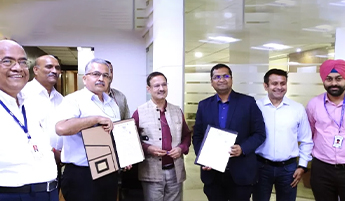Overview
In an era where innovation drives every aspect of our lives, laptops have become essential for the office, education, and entertainment. The engineering behind laptop design plays a vital role in ensuring these devices are powerful, efficient, and user-friendly. Laptop engineering covers a wide range of expertise, including mechanical, electrical, and software engineering. It involves everything from selecting components and designing circuits, to ensuring the device is both comfortable to use and visually appealing.
Designing a laptop is a complex engineering feat that requires meticulous planning, innovative thinking, and cutting-edge technology. From the initial concept to the final product, each step involves many considerations to ensure that the laptop meets the demands of modern users.
In this blog, we’ll deeply dive into the engineering behind laptop design, exploring key stages, challenges, the latest trends in the laptop industry, and VVDN’s experience in laptop design and manufacturing.
Conceptualization and Initial Design
The journey of designing a laptop begins with the conceptualization phase. This involves brainstorming sessions where engineers, designers, and product managers come together to define the core objectives of the new laptop. Key questions addressed in this phase include:
- What are the target specifications?
- Who is the target audience? (Students, Gamers, Professionals)
- What unique features or selling points will differentiate the laptop from competitors?
Once the concept and specifications are locked, engineers and UI/UX designers create the initial sketches and 3D models of the laptop.
Material Selection and Structural Design
Choosing the right material is very important for durability, weight, and cost. Common materials used in laptops include aluminum, magnesium alloy, carbon fiber, and high-quality plastics. Each material has its own advantages and disadvantages and is selected based on the use case and type of laptop.
Thermal Management
One of the most important challenges in any laptop design is managing heat. As laptops become more powerful, effective thermal management becomes critical to prevent overheating and ensure optimal performance. Various techniques are implemented to overcome this, such as heat pipes that transfer heat away from the CPU and GPU to dissipate through the laptop chassis. Another method is the use of fans that provide active cooling by moving air over heat sinks to dissipate heat. Innovative designs such as strategically placed vents and the use of thermal paste also play key roles in keeping the laptop cool under heavy workloads and peak performance.
Hardware Design and Motherboard Schematics
The hardware design phase involves detailed planning and design of the laptop’s internal components. The schematics of the motherboard are created, ensuring that all components, including the CPU, GPU, RAM, storage, and I/O ports, are properly integrated. This phase includes:
- Motherboard Design: Designing the motherboard that involves creating a layout that connects all the components efficiently. Engineers ensure power distribution is optimal and that signal integrity is maintained to avoid issues such as electromagnetic interference and signal degradation.
- Component Placement: Careful consideration is given to the placement of components to ensure that they do not interfere with each other and the thermal management solutions can be effectively implemented.
Battery Technology
Battery life is a critical factor for laptop users. Power management techniques are implemented to increase battery backup. These include dynamic power scaling, efficient power distribution, and software optimization to reduce power consumption during idle periods.
Display Technology
The display is a key component of a laptop that impacts user experience. Engineers balance resolution, color accuracy, brightness, and refresh rate to provide a visually appealing and responsive display. Today, laptops available in the market include IPS or OLED displays for superior visual quality.
Software Engineering: BIOS and Operating System
Software engineering is a crucial aspect of laptop design, focusing on the integration of the BIOS and the operating system. The choice of operating system, often Windows, involves extensive customization and optimization to ensure compatibility and performance. The software thing includes driver development, system stability, and security features. Features like power management, which are crucial for extending battery life and enhancing user experience are implemented here.
Final Assembly and Testing
Once all components are designed, integrated, and tested individually, the final assembly of the laptop takes place, that includes :
- Component Assembly: Assembling the motherboard, CPU, GPU, RAM, storage, battery, display, and other components within the chassis.
- Software Installation: Loading the BIOS and operating system onto the laptop. This includes installing necessary drivers and conducting initial software testing to ensure compatibility and performance.
- Durability Testing: The laptop undergoes rigorous testing to ensure it can withstand real-world conditions. These tests include drop tests, vibration tests, temperature and humidity tests, and hinge tests.
Latest Trends in Laptop Technology
In the rapidly evolving tech landscape, staying ahead of the curve is crucial. One of the latest trends in laptop technology is the integration of artificial intelligence (AI) and machine learning. AI-enabled laptops can offer personalized user experiences, enhanced security features like facial recognition, and intelligent performance optimization. For instance, Intel’s latest processors incorporate AI capabilities that can dynamically adjust performance settings based on the user’s activities, ensuring a seamless and efficient experience. This trend not only boosts productivity, but also sets new standards regarding what users can expect from their laptops.
VVDN in Laptop Design and Manufacturing
VVDN, with extensive experience in the engineering domain, has indigenously developed production-ready laptops based on the Intel platform. The laptop is based on the Intel® Celeron® processor and is available to all OEMs for white-labeling. VVDN has completed all aspects of the laptop hardware, software, mechanical design, testing, and manufacturing in-house.
For more information on the laptops designed by VVDN, write to us at info@vvdntech.in.





















